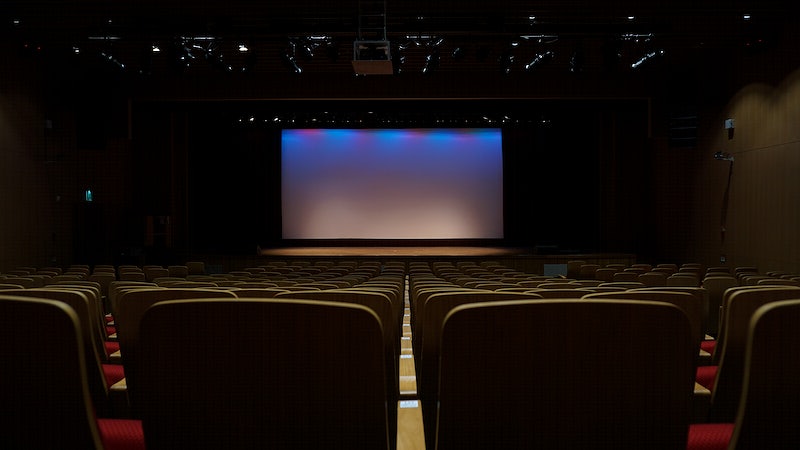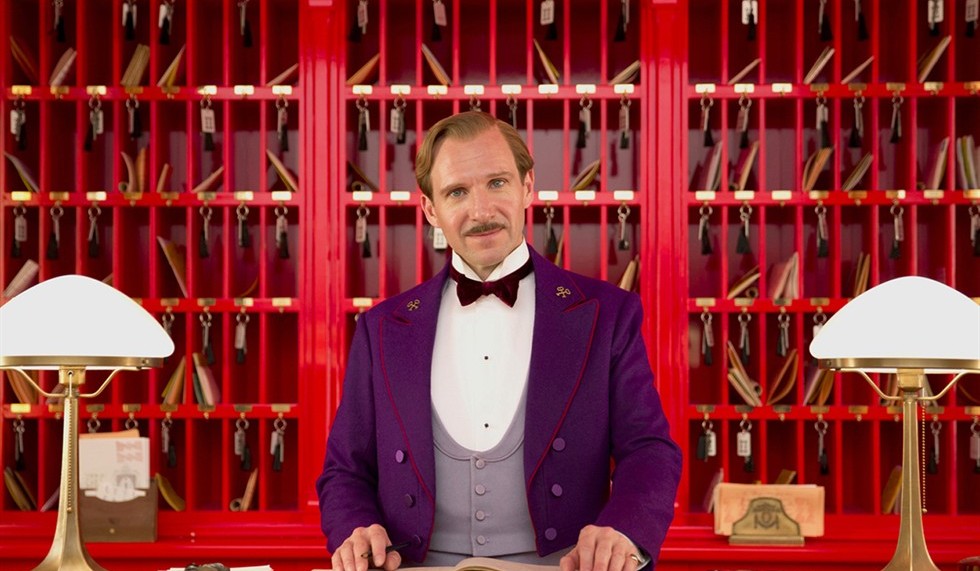
If you’re anything like me, the mere mention of “movie theaters” these days sends a shiver down your spine. A quick peek at Google News will barrage you with a parade of grim headlines: “movie theaters close nationwide,” “movie theaters are in trouble,” “a decline in movie theaters,” you get the picture. It’s a stark reminder that between 2019 and 2023 alone, the United States waved goodbye to a staggering 12 percent of its total movie screens. And honestly, that statistic, as depressing as it is, doesn’t even begin to tell the full story of what we’ve truly lost.
Because what’s really gone isn’t just a percentage point on a chart; it’s a piece of our collective past, a part of growing up for so many of us. Many of the movie theaters modern cinephiles remember frequenting as kids have simply vanished. They weren’t just buildings; they were portals to other worlds, places where sticky floors and the aroma of stale popcorn were part of the magic. They were swallowed up by the remaining handful of corporate giants or, even more heartbreakingly, went out of business entirely. Today, it feels like every theater is either an AMC, a Regal, or a Cinemark, lacking that unique charm we once took for granted.
Now, some might say, “all movie theaters are the same.” But if you’ve ever stepped into one of those grand old palaces, you know that’s simply not true. These weren’t just auditoriums; they were architectural marvels with their own auditorium layouts, seating styles, and yes, even their own wonderfully hideous lobby carpeting. These unique touches gave each visit a distinct flavor, a sense of place that current sterile multiplexes often lack. To honor those glory days, we’re taking a walk down memory lane to revisit some popular movie theater chains and standalone treasures that, sadly, no longer exist. So, let’s grab some virtual popcorn and get ready for some serious nostalgia.
1. **The Roxy Theatre (New York City)**Ah, The Roxy Theatre. Just the name evokes images of old Hollywood glamour, even if it was tucked away in the heart of New York City. This wasn’t just any movie theater; it was a magnificent behemoth, renowned for its massive architecture and absolutely ostentatious interior design. When you walked in, you weren’t just going to see a movie; you were stepping into an experience, a spectacle in itself before the film even began to flicker on the screen.
With an astounding capacity of about 6,000 seats, The Roxy was easily among the biggest movie theaters of its day. Imagine the sheer scale, the grandeur, the buzz of thousands of people gathered under one roof, all eager to escape into a cinematic dream. It wasn’t just a place to watch films; it was a cultural institution, a landmark that defined an era of movie-going where extravagance was part of the allure.
Sadly, even such a grand dame couldn’t escape the harsh realities of financial problems. The Roxy Theatre was forced to close its opulent doors in 1960, a mere blink in the eye of cinematic history given its impact. Even more tragic, it was demolished soon afterward, leaving behind only photographs and the wistful memories of those lucky enough to have graced its hallowed halls. It’s a poignant reminder of how quickly even the most majestic structures can disappear.

2. **The Uptown Theatre (Washington, D.C.)**Next up, we head to the nation’s capital for The Uptown Theatre, which first opened its doors in 1936. This D.C. gem quickly became renowned for its stunning architecture and, crucially, its genuinely large screen. For movie buffs, a big screen wasn’t just a luxury; it was a promise of an amazing, immersive movie-going experience, the kind that truly transported you beyond your seat.
For decades, The Uptown Theatre maintained its popularity, a steadfast beacon showing Hollywood blockbusters in what felt like the epitome of a classic cinematic environment. It was a place where generations of Washingtonians went to see the biggest films of their time, building a shared history and collective memories within its walls. It wasn’t just a theater; it was a tradition.
But time, and changing trends, are relentless. Sadly, as the era of single-screen theaters began to wane, The Uptown stopped running in 2020. Today, this beautiful piece of cinematic history stands empty, a silent testament to a bygone era. It’s a stark reminder of how even beloved institutions can fall victim to the evolving landscape of entertainment.

3. **The Strand Theatre (St. Louis, Missouri)**Journeying to St. Louis, Missouri, we uncover the story of The Strand Theatre, a once-vibrant cultural hub. When it first opened its doors in 1929, it wasn’t merely a movie house; it was envisioned as one of the city’s premier venues, offering both the latest cinematic marvels and lively vaudeville acts. Its vast scale and elegant design spoke volumes about the ambition and artistic spirit of the era.
Imagine the excitement: a bustling theater where you could witness a live performance one night and be enthralled by a silver screen epic the next. The Strand was a cornerstone of entertainment in St. Louis, a place where the community gathered for shared experiences, laughter, and perhaps a few gasps. It embodied the grand tradition of movie palaces that truly made going to the movies an event.
However, like many of its contemporaries, The Strand Theatre eventually faced an uncertain future. After many decades of service, the theater was abandoned in the 1970s. Since then, it has tragically deteriorated, a fading echo of its former glory. Its decay serves as a melancholic symbol of the countless historic venues that, once beacons of light, now stand in ruin.

4. **The Astor Theatre (Melbourne, Australia)**Crossing continents, we find The Astor Theatre in Melbourne, Australia, an old movie theater with a truly distinct personality. It opened in 1936 and quickly became famous for its absolutely stunning Art Deco style. Every curve, every line, every detail of its design whispered tales of elegance and cinematic sophistication, making it a true architectural jewel.
This isn’t just any old cinema; the Astor holds a special place in the hearts of Melburnians. Its beautiful Art Deco interiors and unique programming, often showing double features of classic and contemporary films, made it a beloved institution. It’s the kind of place that embodies the magic of cinema, offering an experience that transcends mere film-watching.
Its future, however, has been anything but clear. The Astor briefly closed in 2020, hit hard by financial problems that were exacerbated by the global COVID-19 pandemic. While its fate has hung in the balance, it remains a well-known landmark, cherished for its cultural significance and undeniable nostalgic appeal. There’s a strong hope among film lovers that this beautiful theater will be brought back to life, continuing its legacy for generations to come.

5. **The TCM Classic Film Festival Theatre (Hollywood, California)**Ah, Hollywood! The very name conjures images of movie magic, and the TCM Classic Film Festival Theatre was once a dazzling example of that old-fashioned cinematic grandeur. It wasn’t just a theater; it was a piece of Hollywood history, a venue that played host to numerous big movie openings over time. Imagine the stars, the red carpet, the palpable excitement of premieres right here!
This theater, steeped in the legacy of classic cinema, was a temple for film lovers, embodying the very spirit of Hollywood’s golden age. It was a place where iconic films debuted and where the industry’s luminaries gathered, making it a pivotal location for the cinematic world. Every screening here must have felt like a journey back in time, celebrating the artistry and glamour of film.
Despite its storied past and the deep reverence it held within the film community, the TCM Classic Film Festival Theatre ultimately closed down. It has been abandoned for years, a sad shell of its former glory. While attempts have been made to bring the theater back to its former splendor, the task is monumental, and its current state serves as a powerful reminder of how even Hollywood’s most cherished spots can succumb to the passage of time.
6. **The Regent Theatre (Los Angeles, California)**Staying in the city of angels, we arrive at The Regent Theatre, inaugurated way back in 1928. This was no ordinary movie house; it was a glittering movie palace, a true architectural marvel designed to impress and entertain. Its sophisticated architecture wasn’t just for show; it was part of an immersive experience, a prelude to the cinematic wonders within.
The Regent was widely known for its ability to host large events and grand movie presentations. Picture the throngs of people, dressed in their finest, eager to witness the latest Hollywood spectacles. These theaters weren’t just about watching a film; they were about the entire social occasion, the shared anticipation, the collective gasp, and the applause. They were gathering places for a community united by the love of stories on the big screen.
But even the most glittering palaces can lose their sparkle. After years of neglect, The Regent Theatre sadly closed its doors in the late 2000s. While some of these historic venues find new life as music venues or event spaces, the closure of a movie palace like The Regent still marks the end of an era for traditional film exhibition. It’s a somber note in the symphony of disappearing cinemas, leaving us to wonder about the silent memories within its walls.
Alright, so we’ve already taken a bittersweet trip down memory lane, mourning some of the cinematic giants that once graced our towns and cities. But trust us, the nostalgia trip isn’t over yet! We’re just getting warmed up, because there are still more beloved movie palaces and neighborhood gems whose stories deserve to be told, remembered, and yes, maybe even a little tear shed for.
This next batch of theaters continues our journey, exploring how these architectural beauties served their communities, dazzled us with their unique designs, and ultimately, why they had to close their curtains for good. Get ready to feel those pangs of longing for sticky floors and the magic of a shared cinematic experience, because these stories really hit home.
7. **The Plaza Theatre (Atlanta, Georgia)**Our next stop brings us to Atlanta, Georgia, and the truly iconic Plaza Theatre. Opened way back in 1939, this place wasn’t just another building; it was a gleaming Art Deco marvel, a local landmark that shouted ‘sophistication’ from its very foundations. Imagine stepping inside, feeling the weight of history and the unmistakable style of a bygone era.
For decades, The Plaza Theatre wasn’t just a place to catch a film; it was a vibrant community hub that hosted both the hottest cinematic releases and thrilling live performances. It was the kind of versatile venue where generations of Atlantans gathered for shared experiences, whether it was a laugh-out-loud comedy or a gripping drama unfolding live on stage. It was genuinely a cornerstone of local entertainment.
This beautiful facility continued to enchant audiences for many years, acting as a gathering point and a cultural beacon within the city. Its presence was felt deeply by those who frequented its hallowed halls, building up a treasury of personal and collective memories. It’s hard to imagine Atlanta’s cultural scene without its impact.
But even a beloved landmark like The Plaza couldn’t escape the relentless march of time and its associated challenges. Sadly, after falling into disrepair, the theater was forced to close its doors in 2013. A combination of pressing financial issues, a decline in attendance, and the ever-growing mountain of maintenance expenses ultimately led to its unfortunate closure.

8. **The Capri Theatre (Detroit, Michigan)**Next, we roll into the Motor City to celebrate The Capri Theatre in Detroit, Michigan. This place was truly something special, serving its neighborhood with movies for many, many years. It was more than just a cinema; it was a constant source of entertainment and a point of pride for the community it so faithfully served.
The Capri was particularly renowned for its absolutely enormous entryway and its magnificent interior design. Picture this: you’re walking up to a grand entrance, a true statement piece, and then stepping into an opulent space that made you feel like royalty. It was the kind of place that made every movie outing feel like a special occasion.
Thanks to its dazzling appearance and the consistently great movies it screened, The Capri drew moviegoers from all throughout the city. It wasn’t just a local haunt; it was a destination, bringing people together from different corners of Detroit to share in the magic of the big screen. It truly embodied the spirit of communal movie-watching.
However, like so many other single-screen theaters, The Capri eventually succumbed to the changing tides. Early in the 2000s, the cinema closed its doors, a casualty of evolving movie-going behaviors and broader economic downturns that swept through many urban areas. It’s a stark reminder of how external forces can impact even the most beloved local institutions.

9. **The Egyptian Theatre (Hollywood, California)**Hold on a sec, fellow cinephiles! We need to make a crucial distinction here. When we talk about The Egyptian Theatre in Hollywood, California, we’re *not* talking about the one that’s still running today. Oh no, we’re diving into the history books for a different, equally legendary landmark: the Egyptian Theatre on Sunset Boulevard. This original gem was a foundational piece in the annals of Hollywood film.
Opening its doors in 1922, this particular Egyptian Theatre quickly became a powerhouse, famously showing many Hollywood first runs. Imagine the buzz, the glamour, the literal groundbreaking premieres happening right there! It was a place where cinematic history was made, where stars mingled, and where the dreams of moviemaking truly came to life for the first time.
But even in the heart of Hollywood, permanency is a fleeting concept. This version of the Egyptian Theatre, despite its storied past and immense cultural significance, was eventually abandoned in the 1950s. And in a truly heartbreaking twist for preservationists, it was later destroyed entirely to make room for further development, a stark reminder that even hallowed ground can be paved over in the name of progress.

10. **The Paramount Theatre (Burlington, Vermont)**Let’s whisk ourselves away to Burlington, Vermont, where The Paramount Theatre once stood as a truly great local venue. From the moment it started charming audiences in the 1930s, this theater quickly grew to be incredibly important for the entire neighborhood. It was the kind of place that became woven into the fabric of daily life, a central point for community gathering and entertainment.
The Paramount was celebrated for its elegant interior, which transported moviegoers into a world of sophisticated beauty, and its top-notch projections. We’re talking about an immersive experience where the quality of the film on screen matched the grandeur of the surroundings. It wasn’t just a movie; it was a full sensory indulgence.
For decades, this grand Burlington venue consistently drew in moviegoers, becoming a cherished part of countless family outings, first dates, and memorable nights out. It established itself as the go-to spot for cinematic escapism, playing a significant role in the community’s social and cultural landscape. Its legacy stretched far and wide.
Sadly, like so many of its contemporaries caught in the shifting sands of the entertainment industry, The Paramount Theatre closed its doors in the late 1980s and was subsequently abandoned. While there have been hopeful attempts and considerations to reopen the theater, bringing it back to its former glory remains a monumental task, leaving its future perpetually uncertain.

11. **The Fox Theatre (Pittsburgh, Pennsylvania)**Now, let’s head to the steel city, Pittsburgh, Pennsylvania, and recall the magnificence of The Fox Theatre. When it swung open its doors in the 1920s, this place wasn’t just a theater; it was a literal jewel of the entertainment scene, dazzling all who entered with its extravagant decorations and utterly grand design. Talk about making an entrance!
The architects and designers pulled out all the stops to ensure that The Fox offered its customers nothing short of a wonderful movie-going experience. Every detail, from the ornate ceilings to the plush seating, contributed to an atmosphere of pure enchantment, making every visit a memorable escape from the everyday.
It was a place where Pittsburghers could truly immerse themselves in the glamour and fantasy of Hollywood, a cultural oasis that brought the biggest films of the era to their doorstep. The Fox Theatre created a sense of occasion, transforming a simple movie screening into a spectacular event that residents eagerly anticipated.
Despite its initial splendor and the joy it brought to so many, The Fox Theatre’s run was tragically cut short. It closed its magnificent doors by the 1960s, a surprisingly early end for such a grand institution. Though there have been sporadic ideas and wistful whispers about a comeback over the years, it remains sadly closed, a testament to what once was.

12. **The Bijou Theatre (New Haven, Connecticut)**Finally, we journey to New Haven, Connecticut, to remember The Bijou Theatre, a true pillar of the city’s cinema scene. Opening in the early 1900s, this theater quickly became a beloved fixture, attracting a lot of local movie buffs who cherished its intimate and lovely environment. It was a cozy, welcoming space that felt like home to many.
Unlike the sprawling movie palaces, The Bijou offered a more personal and classic movie-watching experience. It was the kind of place where you could truly settle in and lose yourself in the story, fostering a deep connection between the film and its audience in a way that larger venues sometimes struggled to achieve.
For years, it served as a vital community gathering spot, a place where people of all ages could come together to share the magic of cinema. The Bijou Theatre carved out a special niche in the hearts of New Haven residents, solidifying its role as an important cultural touchstone in the area.
However, the 1960s brought a challenging era for many independent theaters, and The Bijou was unfortunately not immune. Beset by financial problems, the theater shuttered its doors and was left abandoned for many years, a quiet but poignant reminder of a once-vibrant past. Its closure marked the end of an era for classic cinema in New Haven.
And there you have it, folks. Twelve iconic movie theaters, each with its own incredible story, its unique charm, and its heartbreaking end. From grand Art Deco palaces to beloved neighborhood gems, these places weren’t just buildings; they were the backdrops to our memories, the sites of countless first dates, family outings, and moments of pure cinematic bliss. They represented a golden age of movie-going, where the experience was just as magical as the film itself. While the landscape of cinema continues to evolve, these vanished venues serve as powerful reminders of the communal joy and cultural significance that a simple trip to the movies once held. So, the next time you find yourself near a local theater, especially an independent one, maybe pop in. Support the magic, because who knows how long it will be around? Let’s keep these stories alive, one ticket at a time!”}
,{“_words_section2”: “1897





